100 photos and videos for 100 years of Machu Picchu
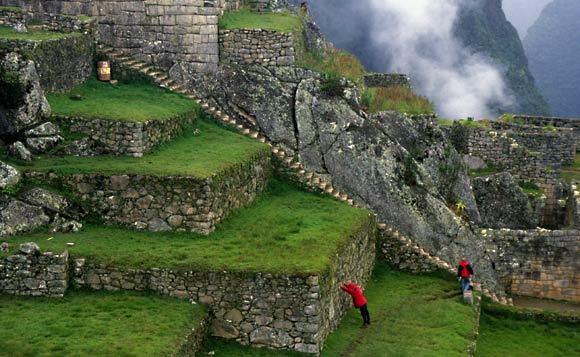
Tourists climb the stone stairs of Machu Picchu in 1995. (Christopher Reynolds / Los Angeles Times)
On the centennial of Hiram Bingham III’s arrival atop Machu Picchu, here are 100 photos and video clips of the landmark and neighboring Sacred Valley. To browse thumbnails of these photos, visit our main Machu Picchu page.
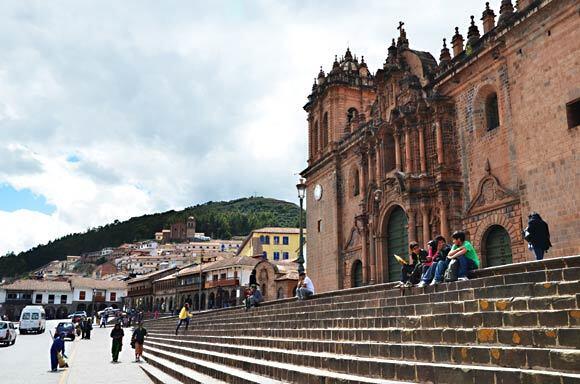
About 70 miles southeast of Machu Picchu by rail and road, Cuzco’s Plaza de Armas is dominated by the city’s cathedral. Photo taken in 2011. (Christopher Reynolds / Los Angeles Times)
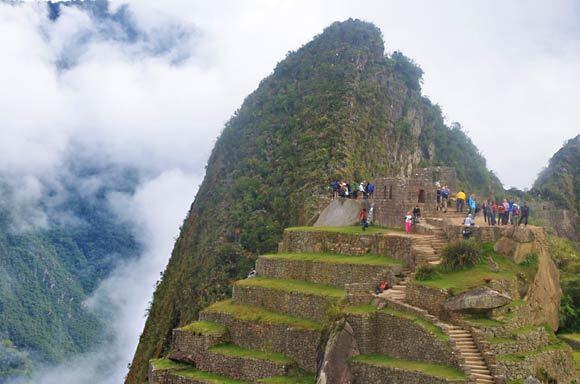
Many historians say the terraces and structures of Machu Picchu were built by the Incas in the early 15th century. Photo taken in 2011. (Christopher Reynolds / Los Angeles Times)
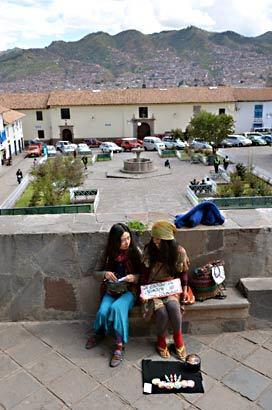
Cuzco teems with backpackers from around the world, including these Japanese travelers, who were selling origami pieces. Photo taken in 2011. (Christopher Reynolds / Los Angeles Times)
Advertisement
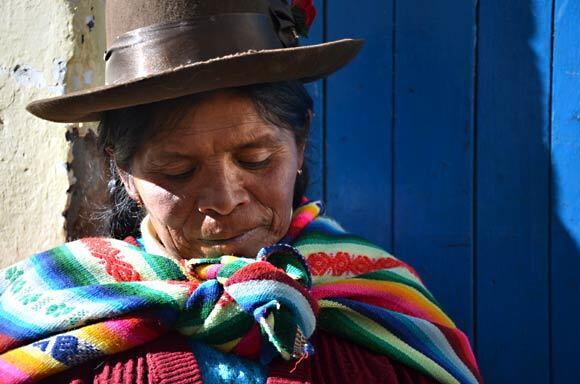
Traditional Quechuan garb includes hats and colorful cloaks such as those worn by this woman in Cuzco. Photo taken in 2011. (Christopher Reynolds / Los Angeles Times)
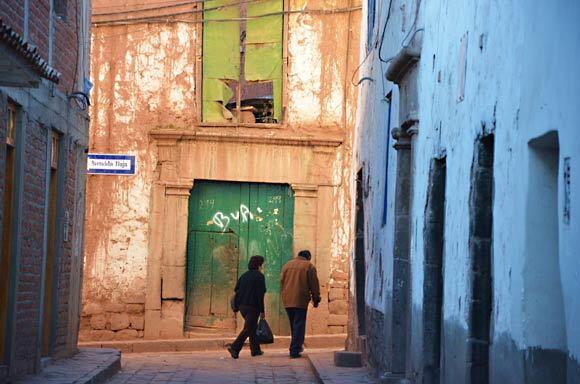
Cuzco, once the capital of the Incan empire, has more than 350,000 people living amid its historic buildings. Photo taken in 2011. (Christopher Reynolds / Los Angeles Times)
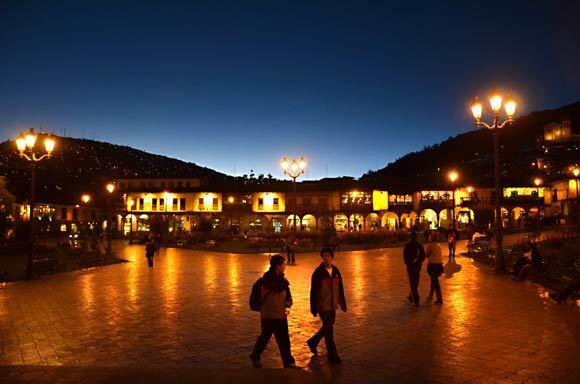
Streetlights illuminate Cuzco’s Plaza de Armas. Photo taken in 2011. (Christopher Reynolds / Los Angeles Times)
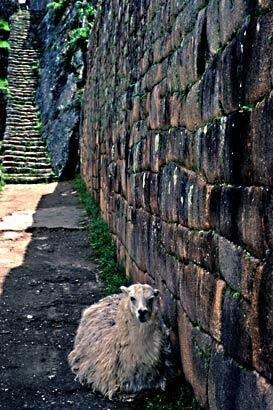
Llamas at the Machu Picchu site have long served to charm tourists and trim the grass. Photo taken in 1988. (Christopher Reynolds / Los Angeles Times)
Advertisement
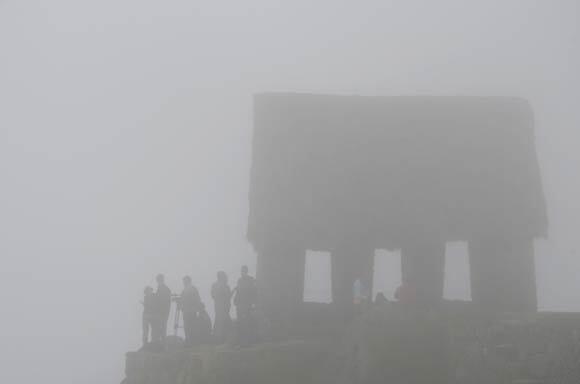
Early morning often brings thick fog to the mountaintop of Machu Picchu. Photo taken in 2011. (Christopher Reynolds / Los Angeles Times)
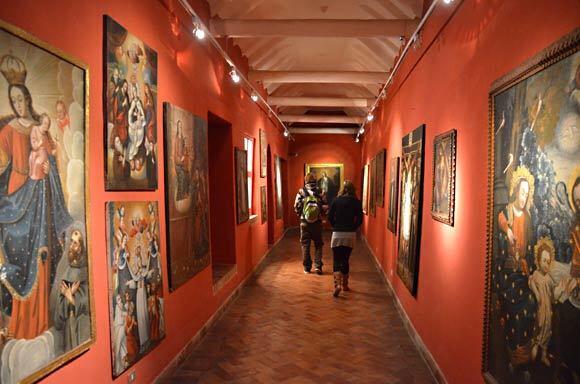
Travelers browse paintings at Cuzco’s Museum of Pre-Columbian Art. Photo taken in 2011. (Christopher Reynolds / Los Angeles Times)
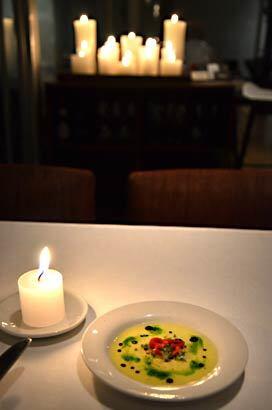
Cuzco’s Map Café is among a new generation of sophisticated restaurants. Photo taken in 2011. (Christopher Reynolds / Los Angeles Times)
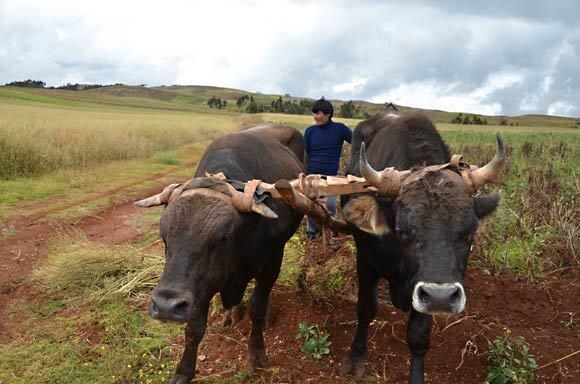
On the morning after a rain in the Sacred Valley outside Cuzco, a farmer coaxes his oxen to drag the plough. Photo taken in 2011. (Christopher Reynolds / Los Angeles Times)
Advertisement
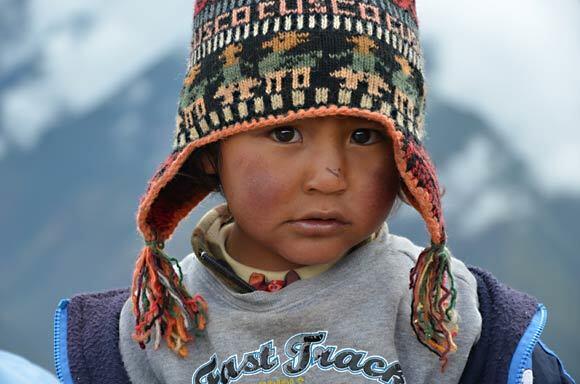
A roadside vendor’s son stands on a high ridge above the Sacred Valley. Photo taken in 2011. (Christopher Reynolds / Los Angeles Times)
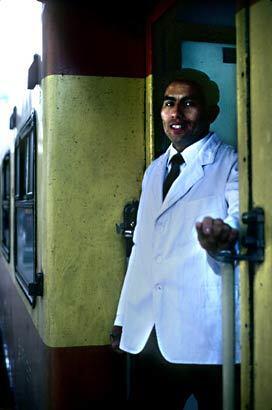
A waiter pauses between stops on a train outside Cuzco. Photo taken in 1988. (Christopher Reynolds / Los Angeles Times)
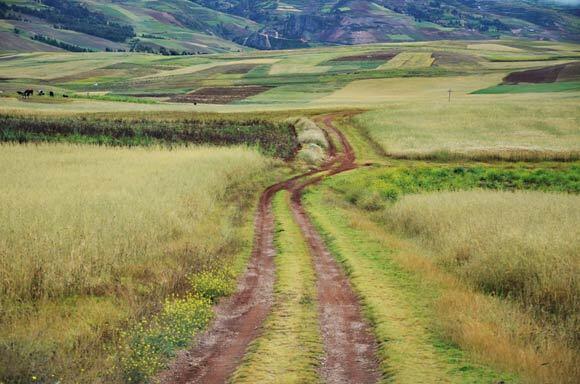
Outside Cuzco, a dirt path leads past fields of barley. Photo taken in 2011. (Christopher Reynolds / Los Angeles Times)
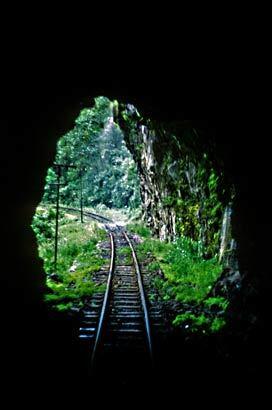
The rail route to Machu Picchu leads through a densely grown, high-altitude territory that Peruvians call the “ceja de selva” -- the eyebrow of the jungle. Photo taken in 1988. (Christopher Reynolds / Los Angeles Times)
Advertisement
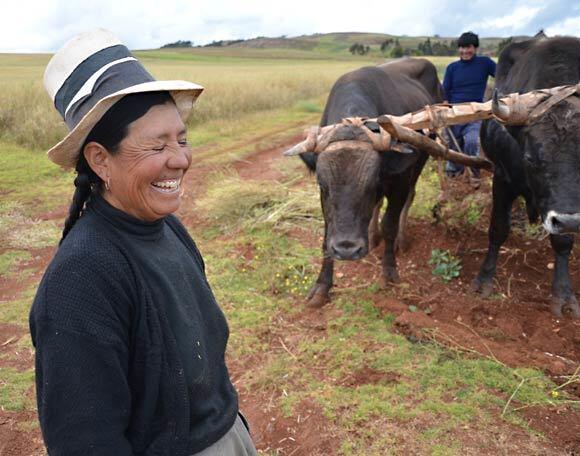
Near the ruins of Moray in the Sacred Valley, a farmer jokes with visitors. Photo taken in 2011. (Christopher Reynolds / Los Angeles Times)
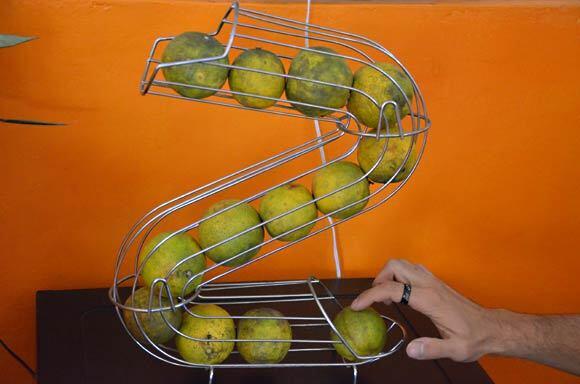
In Cuzco’s Café de Mama Oi, a clever metal device holds ripening fruit, and a tourist reaches for a sample. Photo taken in 2011. (Christopher Reynolds / Los Angeles Times)
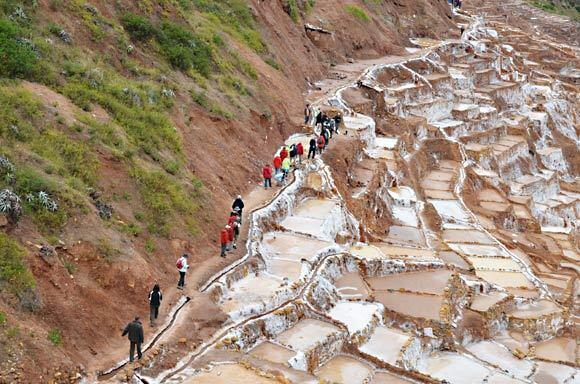
Historians say villagers at Maras, in the Sacred Valley, have harvested pink salt from these drying ponds for hundreds of years. Photo taken in 2011. (Christopher Reynolds / Los Angeles Times)
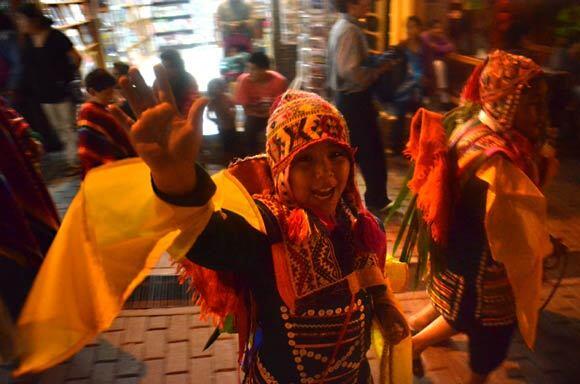
A young student joins a parade celebrating the Feast of the Virgin in the town of Aguas Calientes (a.k.a. El Pueblo de Machu Picchu) at the foot of the mountain that holds Machu Picchu. Photo taken in 2011. (Christopher Reynolds / Los Angeles Times)
Advertisement
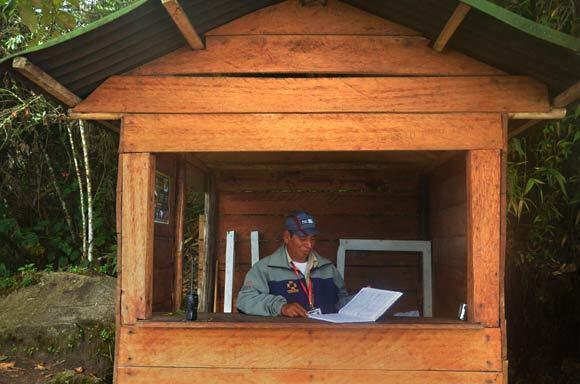
Atop Machu Picchu, a park staffer takes names and nationalities of hikers before they head down the cliff-clinging trail to view an old Inca drawbridge. Photo taken in 2011. (Christopher Reynolds / Los Angeles Times)
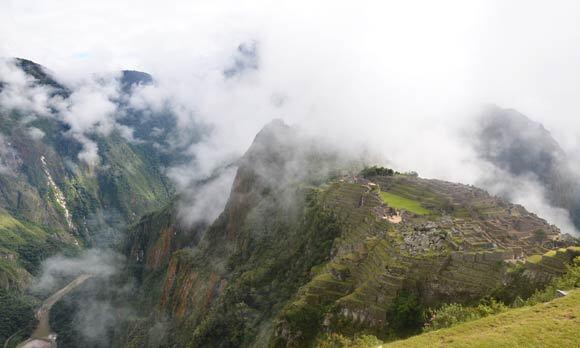
The Urubamba River wraps around the base of Machu Picchu. Photo taken in 2011. (Christopher Reynolds / Los Angeles Times)
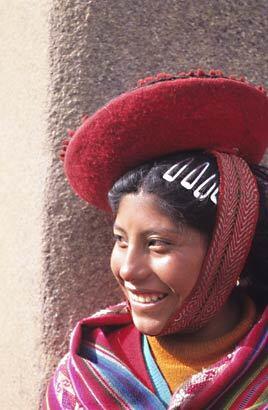
In the Sacred Valley town and ruin site of Ollantaytambo, Quechuan women often sell (and model) jewelry and textiles. Photo taken in 1995. (Christopher Reynolds / Los Angeles Times)
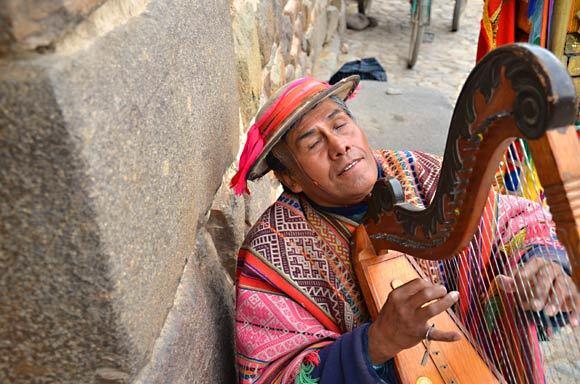
While others sell souvenirs, this Quechuan woman plays the harp for tips near the entrance to the ruins of Ollantaytambo, about 50 miles from Machu Picchu. Photo taken in 2011. (Christopher Reynolds / Los Angeles Times)
Advertisement
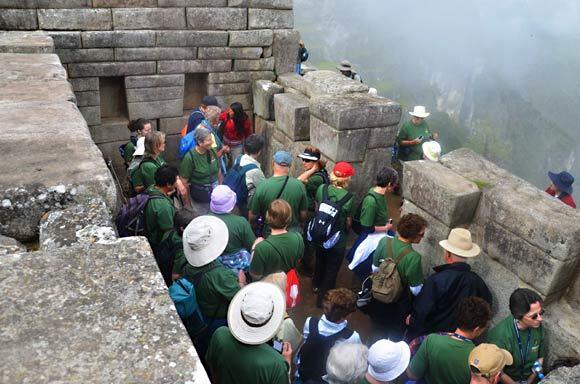
An American tour group gathers in a chamber near the Machu Picchu citadel’s principal temple. Photo taken in 2011. (Christopher Reynolds / Los Angeles Times)
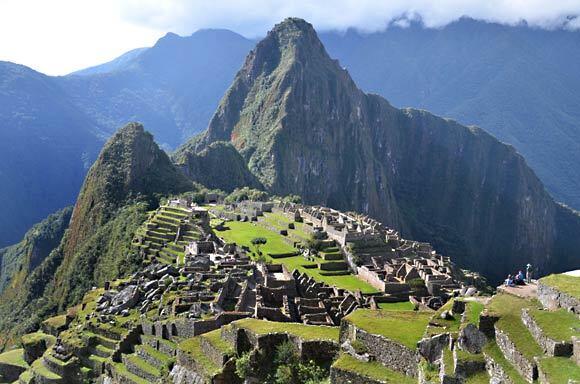
In the classic view of the Machu Picchu ruins, the peak of neighboring Wayna Picchu stands tall in the background. Photo taken in 2011. (Christopher Reynolds / Los Angeles Times)
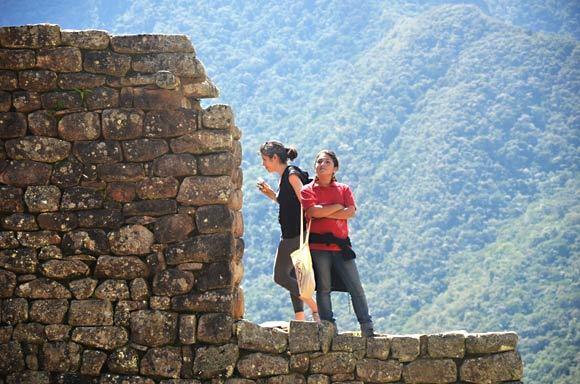
On busy days, more than 2,000 travelers enter Machu Picchu. Photo taken in 2011. (Christopher Reynolds / Los Angeles Times)
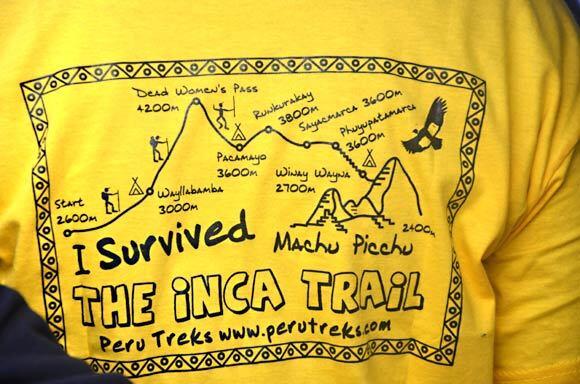
Though most visitors arrive by train and bus, about 200 people a day get there by hiking the Inca Trail, a 26-mile trek that usually takes four days. Photo taken in 2011. (Christopher Reynolds / Los Angeles Times)
Advertisement
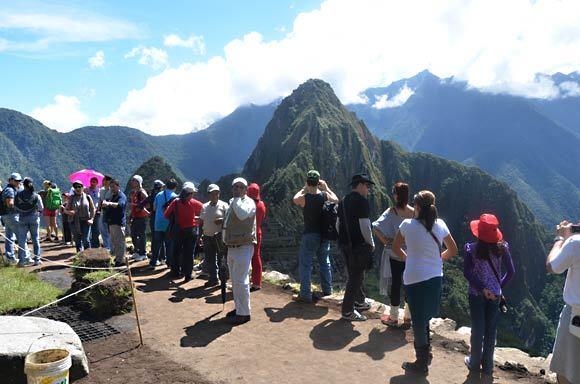
Guides say Machu Picchu is most crowded between 10 a.m. and 2 p.m. Photo taken in 2011. (Christopher Reynolds / Los Angeles Times)
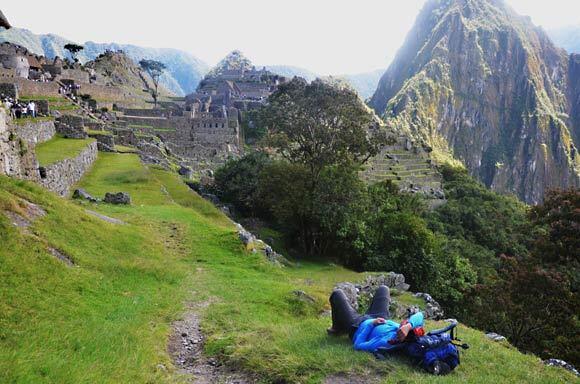
Machu Picchu’s ruins stand at about 8,000 feet above sea level, which is about 3,000 feet lower than the nearby city of Cuzco. Photo taken in 2011. (Christopher Reynolds / Los Angeles Times)
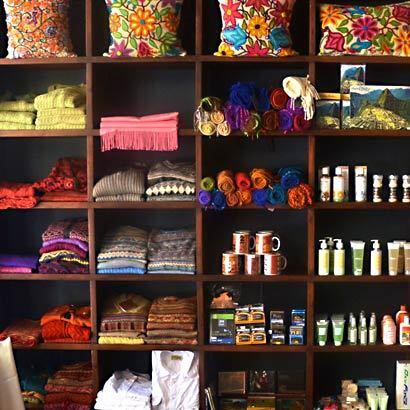
As this gift shop in the Inkaterra El Mapi hotel suggests, the backpacker town of Aguas Calientes, about a mile from Machu Picchu, has grown increasingly upscale as tourism has increased. Photo taken in 2011. (Christopher Reynolds / Los Angeles Times)
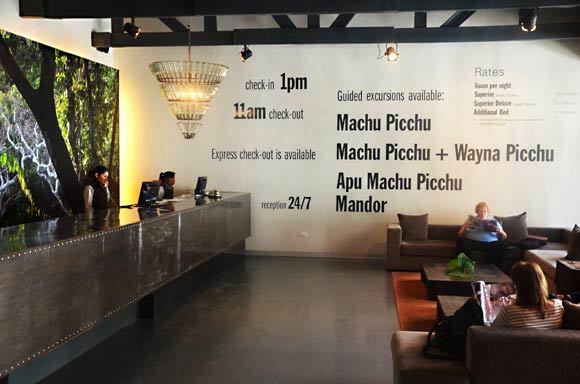
The sleek-looking Inkaterra El Mapi hotel, opened in 2010, is part of a new wave of upscale lodgings in Aguas Calientes. Its 48 rooms rent for $200-$250 nightly. Photo taken in 2011. (Christopher Reynolds / Los Angeles Times)
Advertisement
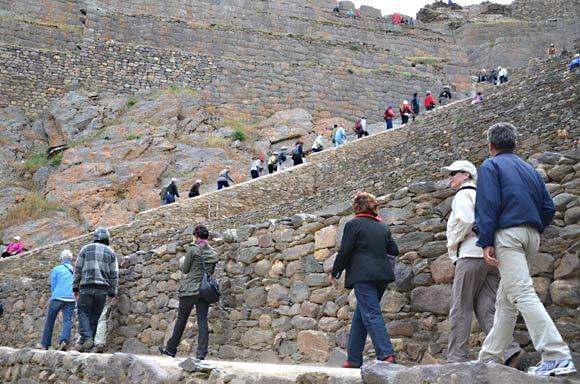
On their way to Machu Picchu from Cuzco, many travelers stop in Ollantaytambo, which features terraced ruins, a lively town and legions of shops and vendors. Photo taken in 2011. (Christopher Reynolds / Los Angeles Times)
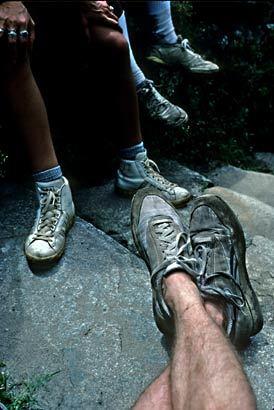
If you prefer not to take the bus ride from Aguas Calientes to Machu Picchu, you can hoof it: The uphill hike covers roughly a mile and typically takes about an hour. Photo taken in 1988. (Christopher Reynolds / Los Angeles Times)
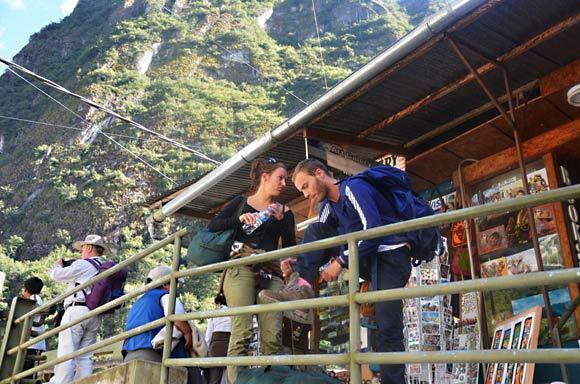
Souvenirs and supplies are sold in Aguas Calientes. Photo taken in 2011. (Christopher Reynolds / Los Angeles Times)
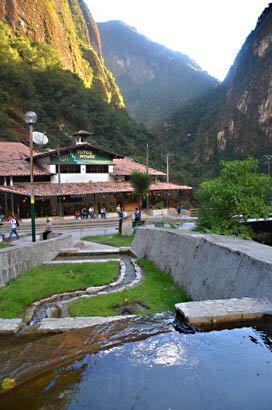
In recent years, growth and flooding have meant much construction and reconstruction (like this bit of civic landscaping above Toto’s House restaurant) in Aguas Calientes, just down the mountain from Machu Picchu. Photo taken in 2011. (Christopher Reynolds / Los Angeles Times)
Advertisement
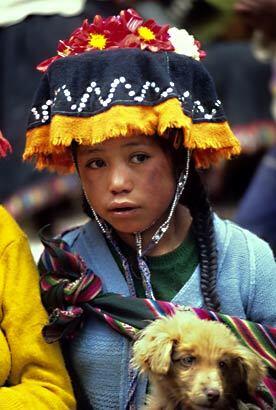
At popular Incan ruins throughout
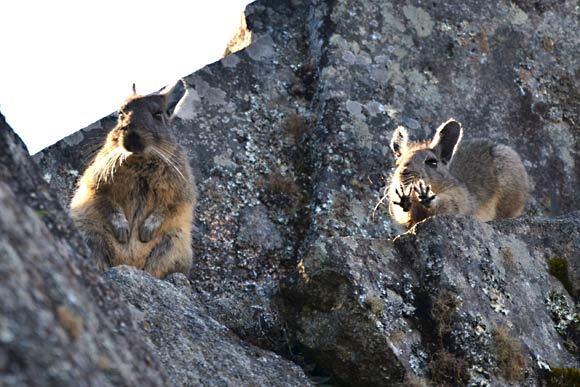
Besides llamas, Machu Picchu is home to many viscachas, which are closely related to chinchillas. Photo taken in 2011. (Christopher Reynolds / Los Angeles Times)
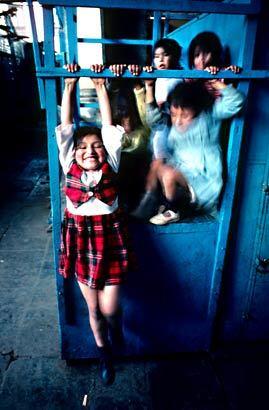
Cuzco’s San Pedro Market. Photo taken in 1988. (Christopher Reynolds / Los Angeles Times)
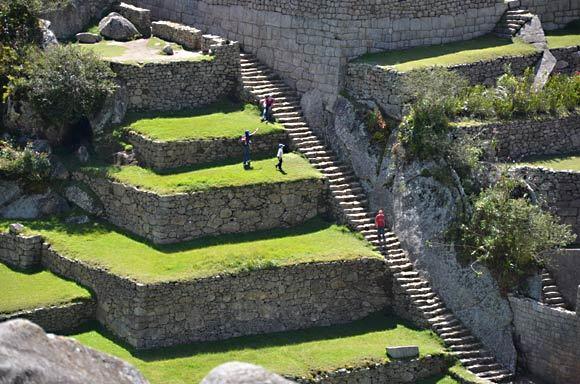
Atop Machu Picchu, tourists are able to tread on the stairs that the Incas used more than five centuries ago. Photo taken in 2011. (Christopher Reynolds / Los Angeles Times)
Advertisement
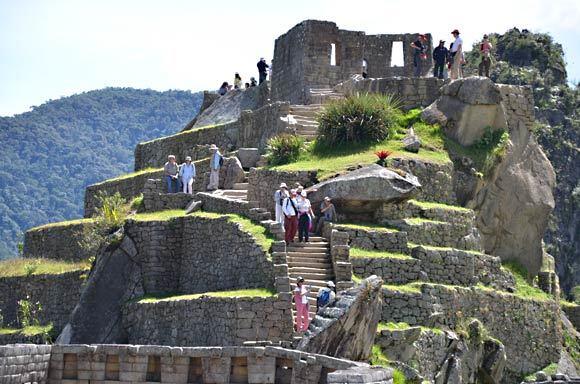
Some of the highest ground at Machu Picchu is occupied by temples, which overlook the residential and agricultural sectors. (Christopher Reynolds / Los Angeles Times)
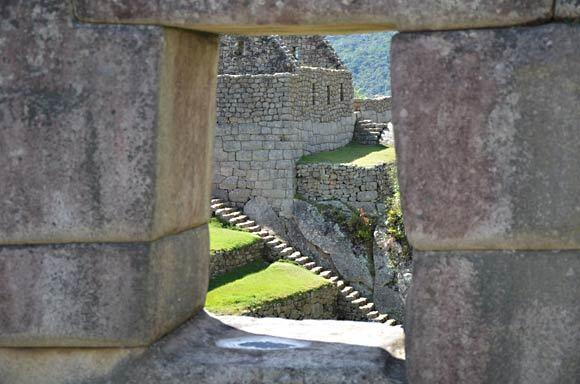
This view of Machu Picchu is seen through one of the windows at the site’s “Temple of Three Windows.” Photo taken in 2011. (Christopher Reynolds / Los Angeles Times)
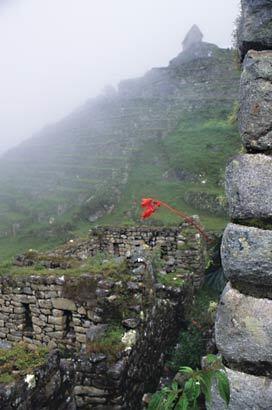
Though green grass and gray stones dominate, stray blooms of red and yellow pop up here and there amid the ruins. Photo taken in 1995. (Christopher Reynolds / Los Angeles Times)
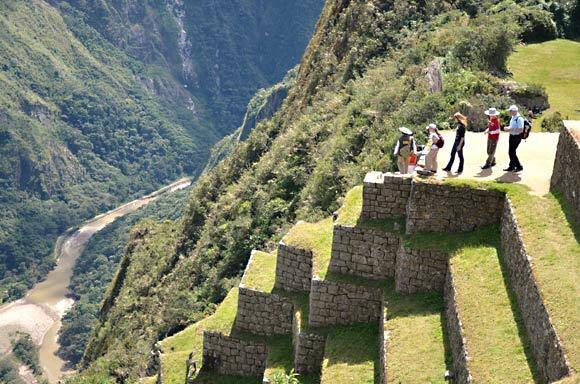
Many crop terraces have steep dropoffs to the Urubamba River. Photo taken in 2011. (Christopher Reynolds / Los Angeles Times)
Advertisement
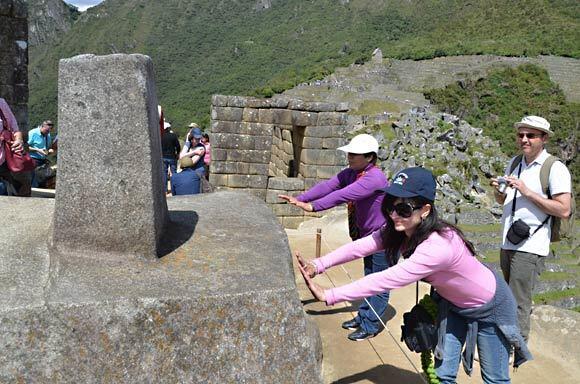
One of the revered points at Machu Picchu is a sculpted stone called the Intihuatana, a.k.a. “the hitching post to the sun.” Some people believe the spot generates mysterious energy, and guides often invite tourists to reach out and feel it -- without actually touching the stone. Photo taken in 2011. (Christopher Reynolds / Los Angeles Times)
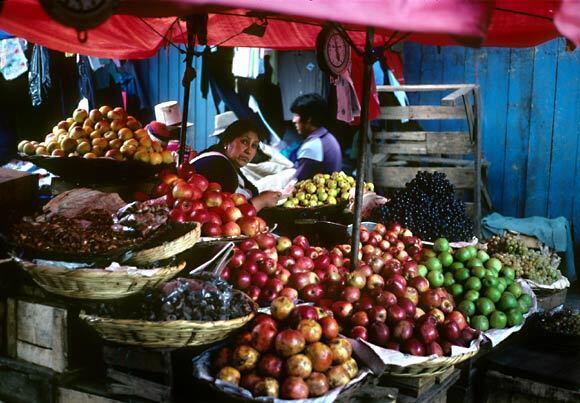
Cuzco’s San Pedro Market is a vibrant open-air venue. Photo taken in 1988. (Christopher Reynolds / Los Angeles Times)
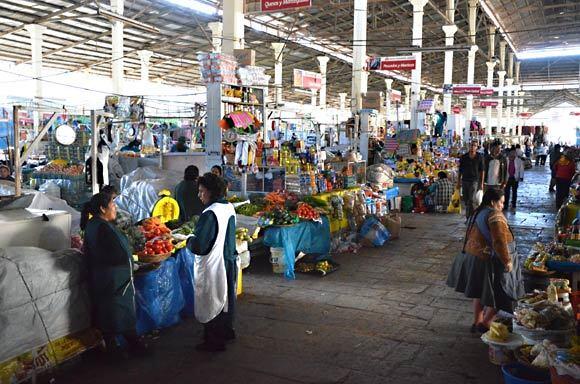
Though many trains to Machu Picchu now leave from Ollantaytambo instead of Cuzco, the San Pedro Market next to Cuzco’s train station remains bustling. Photo taken in 2011. (Christopher Reynolds / Los Angeles Times)
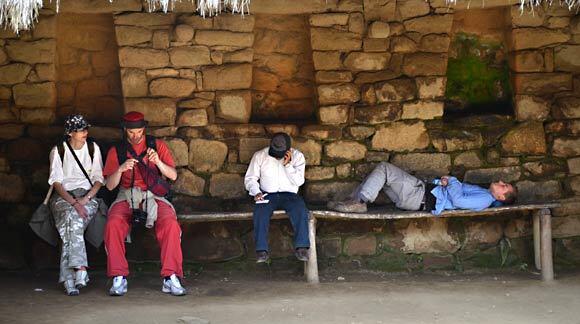
Tourists take advantage of rare shade atop Machu Picchu. Photo taken in 2011. (Christopher Reynolds / Los Angeles Times)
Advertisement
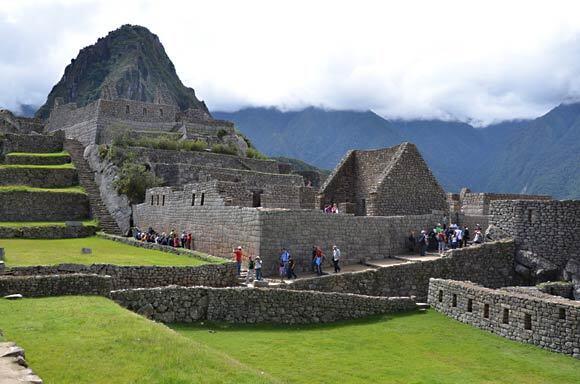
Besides its royal, residential and agricultural areas, the Machu Picchu citadel features a flat central plaza. (Christopher Reynolds / Los Angeles Times)
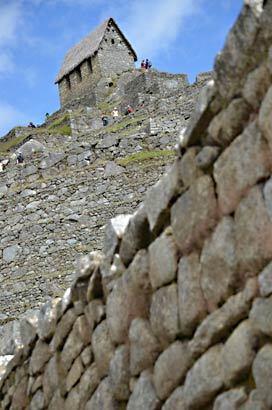
The guardhouse, also known as the Caretaker’s Hut, is one of Machu Picchu’s highest points. Photo taken in 2011. (Christopher Reynolds / Los Angeles Times)
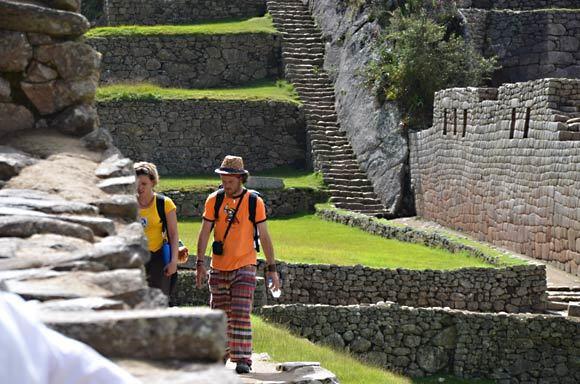
Machu Picchu doesn’t change much, but as hikers pass, the fashion show is endless. Photo taken in 2011. (Christopher Reynolds / Los Angeles Times)
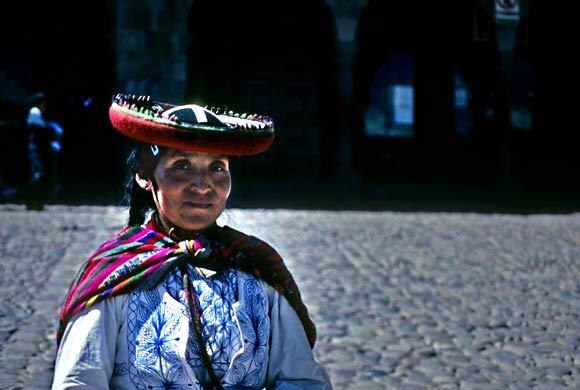
In the 1980s, as now, contemporary Quechuans wear traditional clothes while they sell souvenirs and supplies in Cuzco. Photo taken in 1988. (Christopher Reynolds / Los Angeles Times)
Advertisement
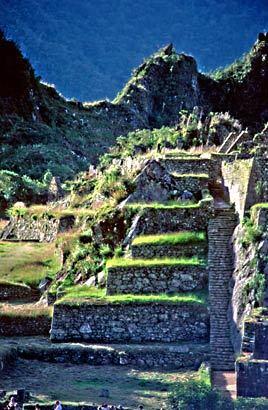
Though the words “Machu Picchu” evoke a single iconic image for many people, the sculpted mountaintop keeps hikers absorbed for hours or days with its array of perspectives. Photo taken in 1988. (Christopher Reynolds / Los Angeles Times)
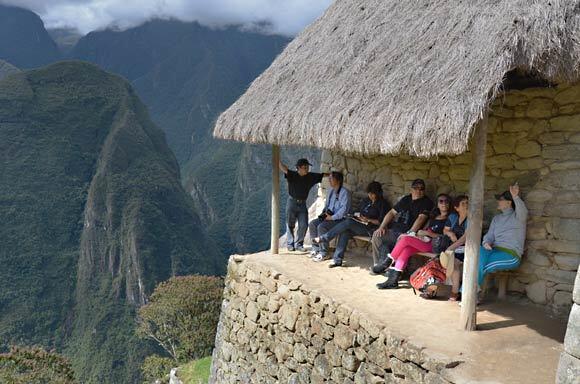
Thatched roofs offer much-needed shade. Photo taken in 2011. (Christopher Reynolds / Los Angeles Times)
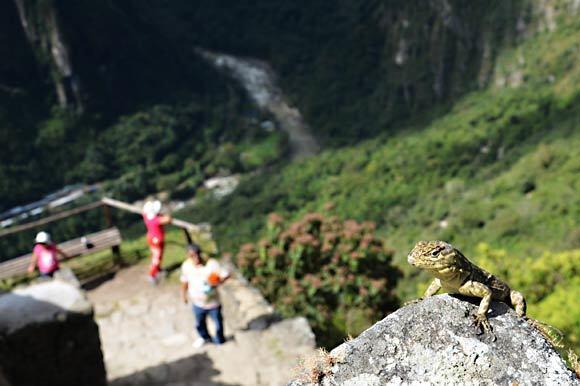
It’s a long way down to the Urubamba River. Photo taken in 2011. (Christopher Reynolds / Los Angeles Times)
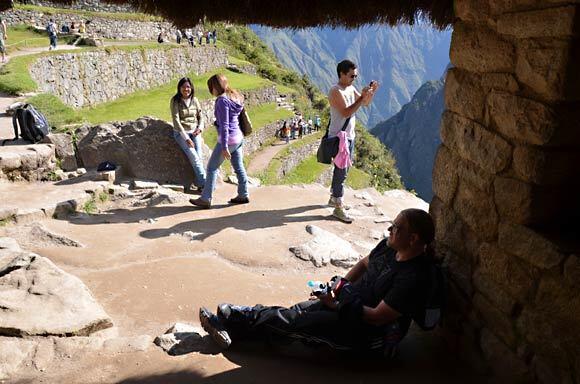
Once the morning fog burns off and the day heats up, shade becomes a precious commodity. Photo taken in 2011. (Christopher Reynolds / Los Angeles Times)
Advertisement
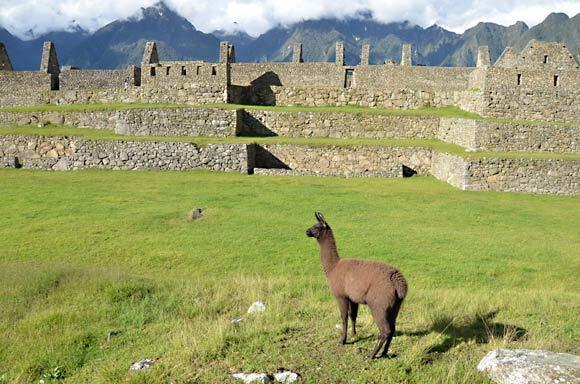
Llamas help keep the grass short. Photo taken in 2011. (Christopher Reynolds / Los Angeles Times)
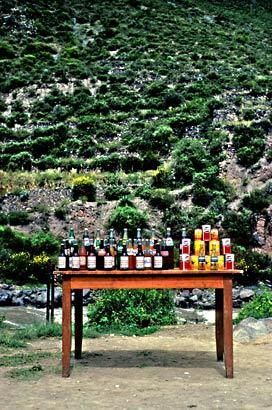
Near the railroad stops between Cuzco and Machu Picchu, refreshment stands and tour-group snack spots are common sights. Photo taken in 1988. (Christopher Reynolds / Los Angeles Times)
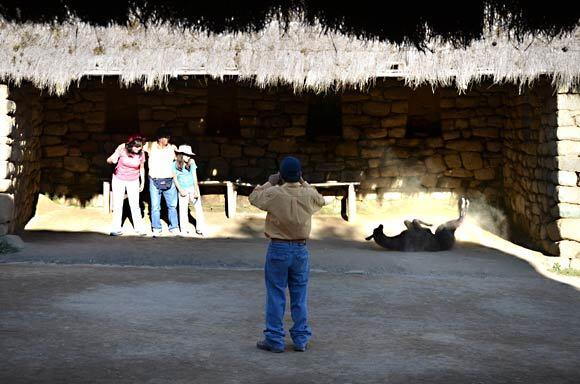
As this family posed for a standard Machu Picchu tourist photo, a llama flung itself down to roll in the dust. Photo taken in 2011. (Christopher Reynolds / Los Angeles Times)
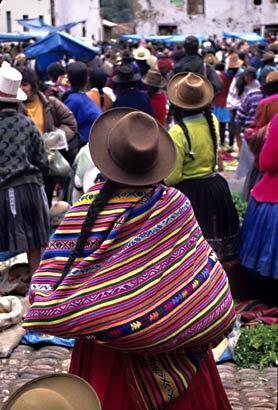
Though a vast tourism infrastructure has grown around Machu Picchu and Cuzco in the last three decades, vendors’ traditional garb has changed little. Photo taken in 1995. (Christopher Reynolds / Los Angeles Times)
Advertisement
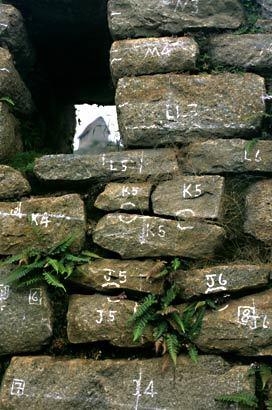
A view of Machu Picchu’s guardhouse. Photo taken in 1995. (Christopher Reynolds / Los Angeles Times)
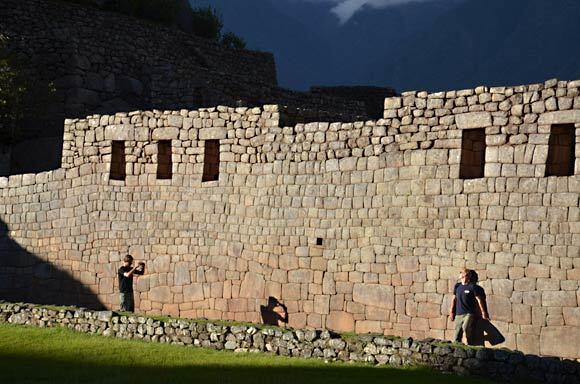
With the day nearly done and Machu Picchu emptying of visitors, these two German tourists used the ruins as a set for a mock fashion shoot. Photo taken in 2011. (Christopher Reynolds / Los Angeles Times)
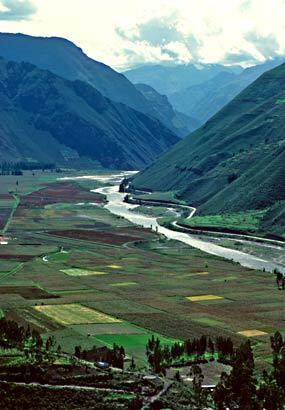
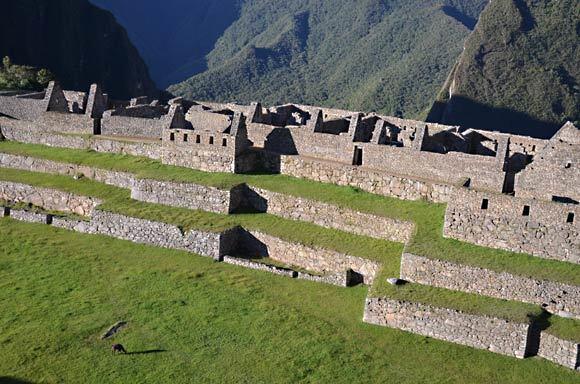
Machu Picchu’s central plaza. Photo taken in 2011. (Christopher Reynolds / Los Angeles Times)
Advertisement
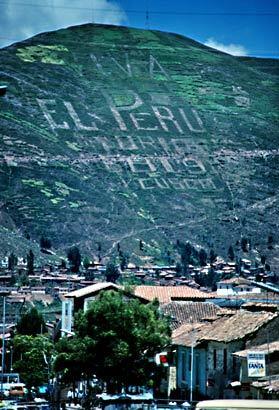
Long ago, on the slopes above the city of Cuzco, some patriotic Peruvians etched their country’s name on the high slopes. Photo taken in 1988. (Christopher Reynolds / Los Angeles Times)
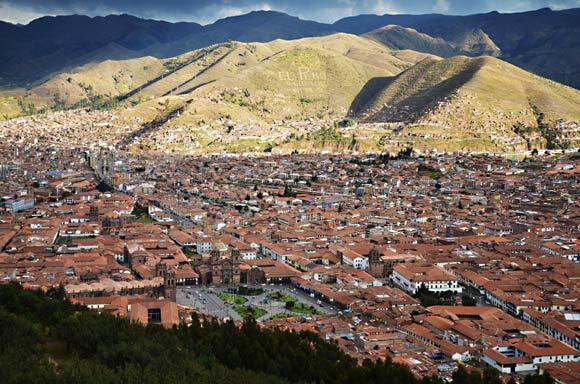
Greater Cuzco’s population has grown to roughly 360,000 -- more than twice what it was in the early 1990s. Photo taken in 2011. (Christopher Reynolds / Los Angeles Times)
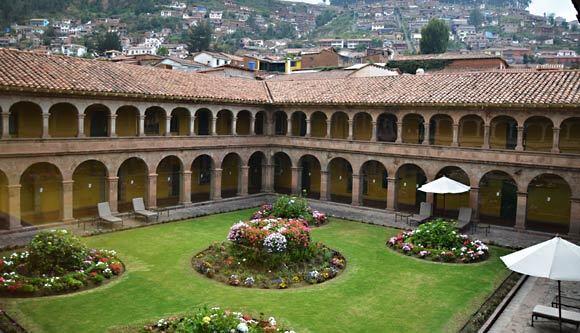
El Monasterio, a converted 16th century monastery with a grand courtyard, is one of the most luxurious hotels in Cuzco. Photo taken in 2011. (Christopher Reynolds / Los Angeles Times)
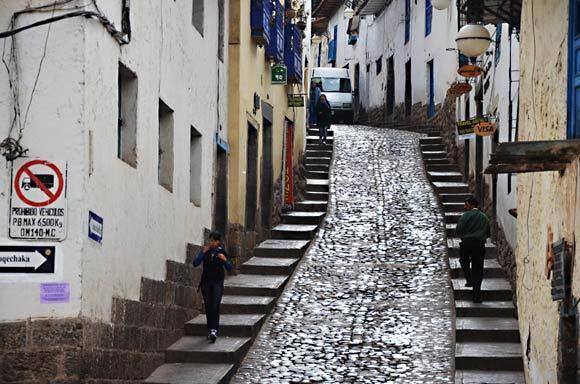
From Cuzco’s central Plaza de Armas, steep, narrow alleys lead into the semi-bohemian, tourist-friendly neighborhood of San Blas. Photo taken in 2011. (Christopher Reynolds / Los Angeles Times)
Advertisement
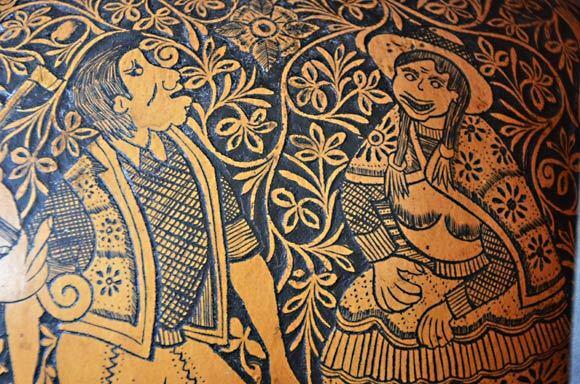
Carved gourds are among the Sacred Valley’s most common souvenirs. Photo taken in 2011. (Christopher Reynolds / Los Angeles Times)
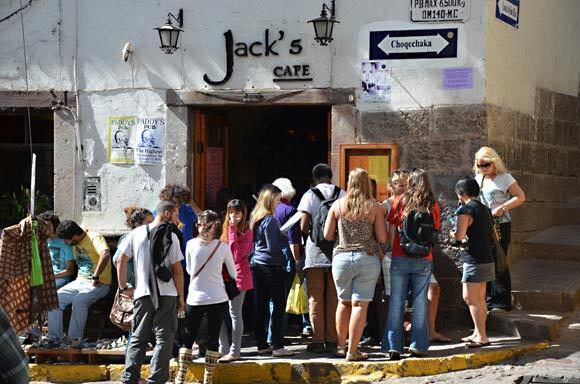
Jack’s Café in Cuzco is a popular breakfast spot for young American travelers. Photo taken in 2011. (Christopher Reynolds / Los Angeles Times)
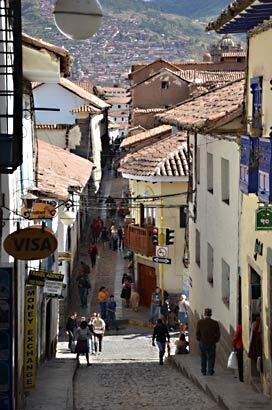
From Cuzco’s charming San Blas neighborhood, steep, narrow alleys lead to the city’s Plaza de Armas. Photo taken in 2011. (Christopher Reynolds / Los Angeles Times)
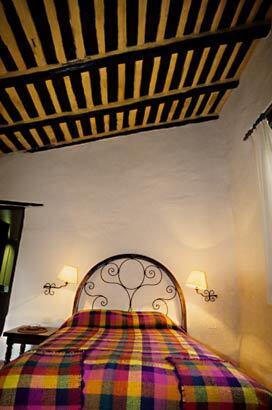
Opened in the early 1990s with 26 rooms, the Inkaterra Machu Picchu Pueblo hotel, seen here in 1995, charged about $105 for a basic room. (Christopher Reynolds / Los Angeles Times)
Advertisement
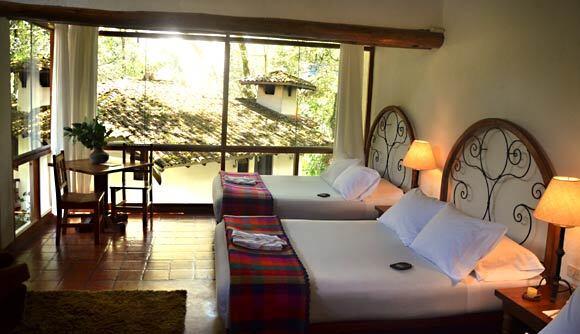
Now boasting 87 rooms, a pool and an orchid garden, the 20-year-old Inkaterra Machu Picchu Pueblo hotel, seen here in 2011, charges about $550 for a standard double room; breakfast and dinner are included. (Christopher Reynolds / Los Angeles Times)
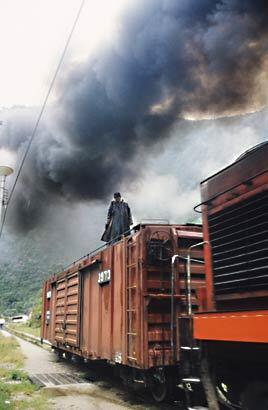
Since the rail line’s construction in the 1930s, the train between Cuzco and Machu Picchu has been crucial to the Sacred Valley’s tourism and economy. Photo taken in 1995. (Christopher Reynolds / Los Angeles Times)
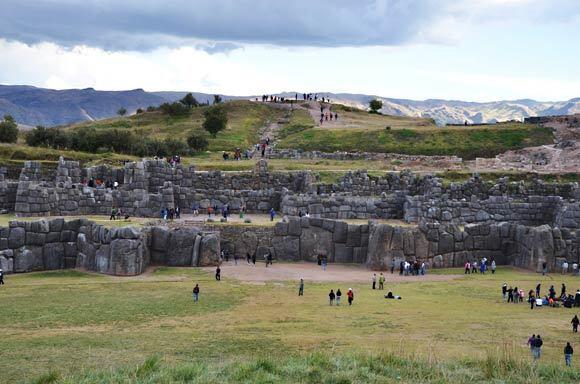
At the northern edge of Cuzco, the Sacsayhuaman ruins make for a fine “appetizer” site for travelers on their way to Machu Picchu. (Christopher Reynolds / Los Angeles Times)
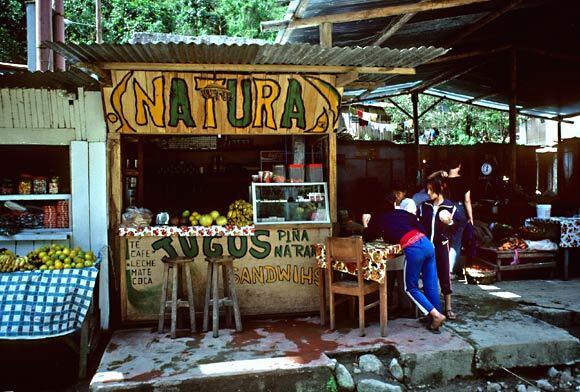
In the late 1980s, there was little more to the Machu Picchu-adjacent town of Aguas Calientes than a row of restaurants and merchants along the railroad tracks. Photo taken in 1988. (Christopher Reynolds / Los Angeles Times)
Advertisement
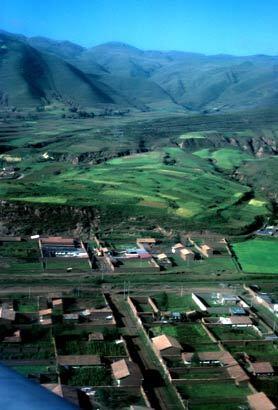
Cuzco, seen here from an airplane, was laid out by the Incas, then seized by the Spanish in the 16th century, with occasional destructive earthquakes over the centuries. Photo taken in 1988. (Christopher Reynolds / Los Angeles Times)
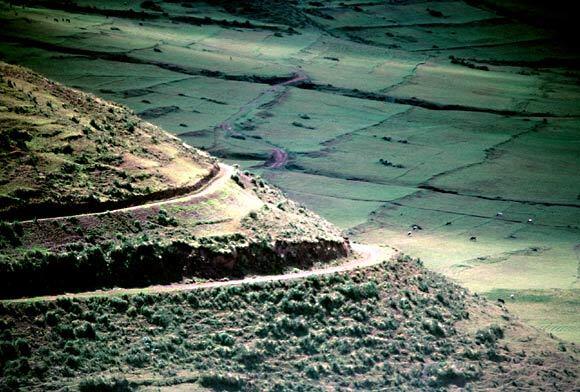
Terraces and ruins are found at the edge of town in Pisac, in the Sacred Valley. Photo taken in 1988. (Christopher Reynolds / Los Angeles Times)
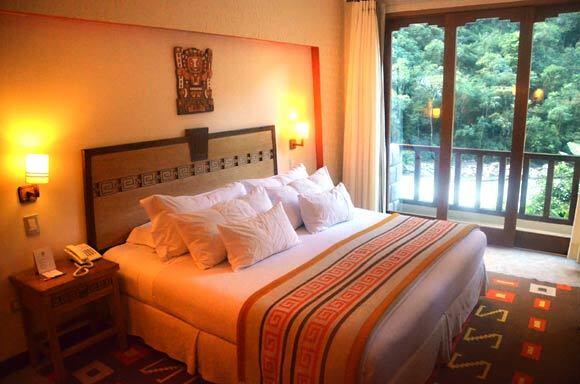
The high-end Sumaq Hotel opened in Machu Picchu-adjacent Aguas Calientes in 2007. Photo taken in 2011. (Christopher Reynolds / Los Angeles Times)
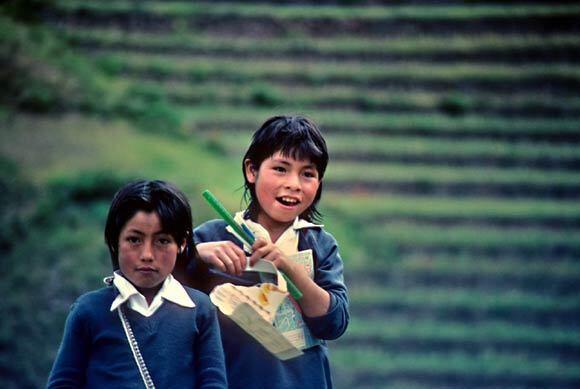
Youngsters in the Sacred Valley. Photo taken in 1988. (Christopher Reynolds / Los Angeles Times)
Advertisement
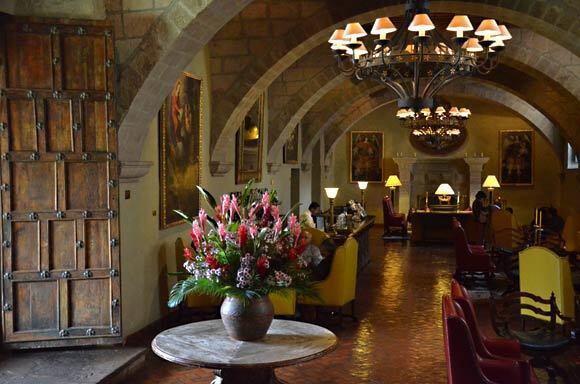
In the late 16th century, a Spanish monk’s vow of poverty might have led to an assignment to this monastery in Cuzco. These days guests pay at least $400 a night to sleep here, in what is now the luxurious 126-room Monasterio Hotel. Photo taken in 2011. (Christopher Reynolds / Los Angeles Times)
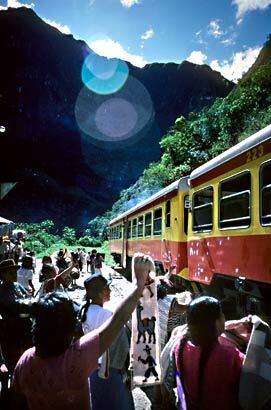
Vendors sell souvenirs along the rail route to Machu Picchu and Aguas Calientes. Photo taken in 1988. (Christopher Reynolds / Los Angeles Times)
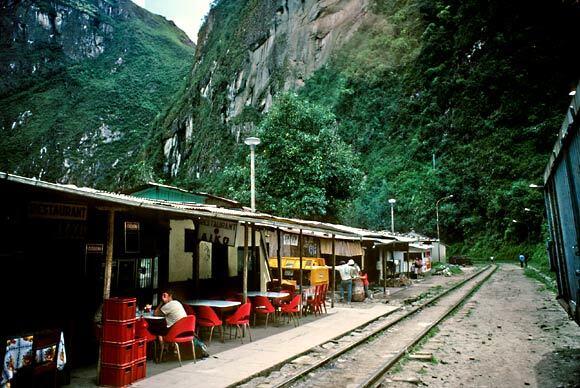
Rustic restaurants lined the tracks in Aguas Calientes in 1988. (Christopher Reynolds / Los Angeles Times)
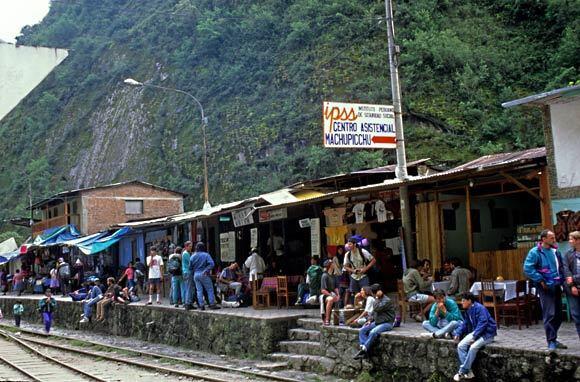
By 1995, the restaurants along the tracks in Aguas Calientes had multiplied, but the scene was still rugged. (Christopher Reynolds / Los Angeles Times)
Advertisement
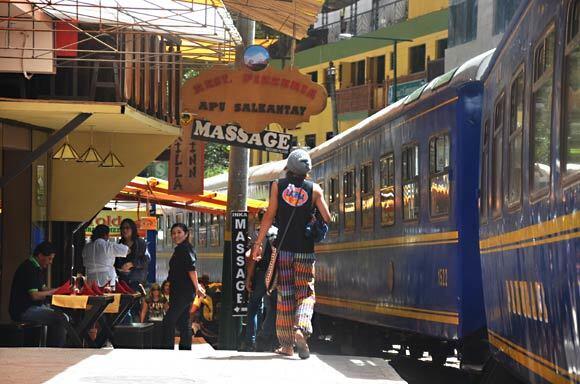
By 2011, Aguas Calientes had grown to 2,000 residents or more, and the restaurants along the tracks were just one element in a burgeoning town. (Christopher Reynolds / Los Angeles Times)
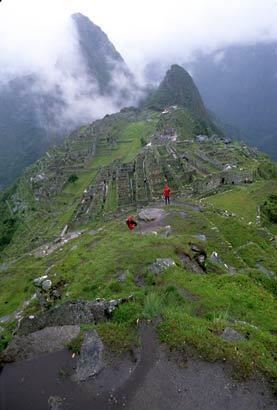
In 1995, Machu Picchu was just beginning to lure back travelers who had stayed away during the years when Peru struggled with domestic terrorism. (Christopher Reynolds / Los Angeles Times)
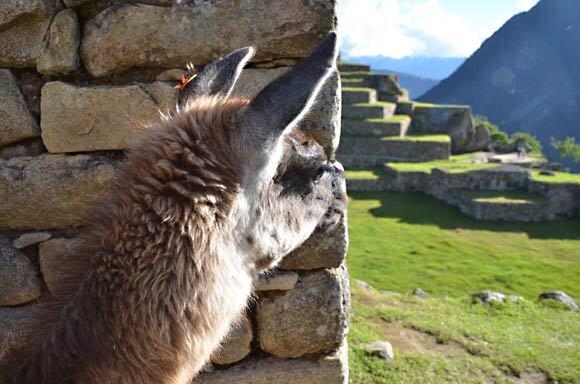
By 2011, with terrorist fears having decreased, thousands of travelers visit Machu Picchu during busy times. But in the early mornings and late afternoon, especially in the off-season, the llamas still don’t have much company. (Christopher Reynolds / Los Angeles Times)



